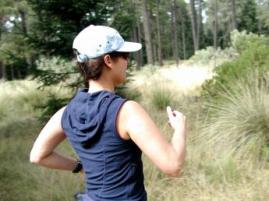- Newsletter|
- What's New |
- About|
- Contact|
Like this site:
|
Home What's New? Newsletter |
BeginnersBeginnersWeight Loss Beginner Run Programs |
Training & ToolsTrainingTips Calculators Injuries |
Race Distances5K10K Marathon |
...And Other Things...QuizBooks Questions Quotes |
[?] Subscribe To This Site
Posterior Tibial TendonitisThis condition occurs when the posterior tibial tendon becomes inflamed or happens to rupture. If you have got this condition, you will know about it. You will have considerable foot pain and ankle pain. Another problem you could experience is an unsteady gait. How to Diagnose Posterior Tibial TendonitisTo work out if you indeed are suffering from posterior tibial tendonitis you will want to look out for the following symptoms: When you experience these symptoms, it is definitely time to go to your physician and get things checked out. An MRI might be needed to understand the damage to the area and to find out if surgery is required or not.
How to Treat Posterior Tibial TendonitisTreatment of this injury is initially focused on giving the affected muscle as much rest as possible. When in pain, you can take ibuprofen or anti-inflammatories to work through it, but you need to take some action to actually give the foot some rest. You can do this in some of the following ways: When a rigid platform is provided for the foot, the boots or inserts will decrease the motion and as a result, the inflammation surrounding the posterior tibial tendon should subside. A short leg cast is more cumbersome than the boots or inserts, but is the most reliable method to use when striving to rest the tendon. Depending on the severity of the injury, surgery may have to be considered. There are different types of surgery possible. The type of surgery is dependent on the state the posterior tibial tendon is in. It could range from cleaning up the tendon to full scale replacement of the tendon including bony reconstruction. Therefore you should go to your physician when you are experiencing these symptoms. Your physician, with or without the help of an MRI scan will be able to work out what you need to do for your feet. Wish to get more running tips? Subscribe to the Best Running Tips Newsletter or to my site blog. Go from Posterior Tibial Tendonitis Page to Running Injuries Page Go from Posterior Tibial Tendonitis Page to Best Running Tips Homepage Running Injuries Running Injury Prevention Foot Injuries: Foot Pain | Black Toenail | Stress Fractures | Posterior Tibial Tendonitis | Heel Injuries: Heel Pain | Achilles Tendinitis | Heel Spur / Plantar Fasciitis | Knee Injuries: Knee Pain | Iliotibial Band Syndrome (ITB) | Leg Injuries: Leg / Calf Cramps | Shin Splints | Hamstring Injury | Hip Pain Upper Body Injuries: Nipple Chafing | Side Stitch | Back Pain | Chest Pain Like this page: |
|

|

|

|
|




